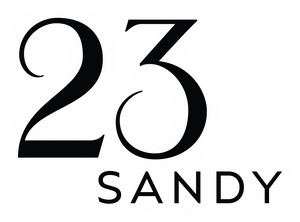| Title | Tracking B15 |
| Artist / Creator | Rachel Simmons |
| Artist's Nationality | United States |
| Place of Publication | Orlando, FL |
| Publication Date | 2019 |
| Author of Text | Rachel Simmons |
| Process / Technique | Letterpress, screen & digital printing |
| Number of Images | 9 |
| Structure / Binding | Accordion with movable wheel and vertical notebook |
| Medium / Materials | Paper, graphing vellum and mylar with brass brads and rare earth magnets |
| Paper Stock | Text and cover weight |
| Number of Pages | 6 |
| Dimensions (WxHxD) | 4.75 x 10 x .75 inches. Extends out to 23.25 inches |
| Edition Size | Limited edition of 10 |
| Box / Wrapper | Self-closing wrapper enclosure with magnetic latch |
| Signed & Numbered | Signed & Numbered Edition |
Tracking B15 by Rachel Simmons - SOLD
Sold
In 2000, the biggest iceberg ever recorded, dubbed B15, broke away from the Ross Ice Shelf in Antarctica. The size of Connecticut, this mega-berg emerged at at time when we still called climate change global warming. It was an ominous sign of things to come, but it was also a natural wonder that attracted a lot of attention beyond the scientific community. The last remnants of this mighty iceberg finally melted near the equator in 2018. The book blends real scientific observations with a fictional account from an obsessed fan that tracks the lifespan of B15 and its “descendants,” i.e., the smaller bergs that broke away from the main iceberg during its 6,600 mile journey around the Southern Continent. Excerpts from the narrator’s journal reveal pet names for the bergs, an admiration for these artifacts of the last wilderness on earth, and a kind of sweet, oblivious obsession with B15’s story. Their excitement and joy is reflected in the colors I most associate with my memorable travels to Antarctica in 2008 and 2009—- juicy marine blues & the bright red of the outpost buildings. In many ways, the text is a meditation on the sublime. The way the narrator both fears and embraces the existence of B15 is another way of understanding the nuances of our broader relationship with nature. The interactive nature of the book’s mechanics—-the central wheel that spins, turning the notebook pages to reveal a photograph and opening the fold out map—- encourages readers to engage with the book physically as well and intellectually.
Artist Bio
Rachel Simmons is an artist-educator teaching printmaking and book art at Rollins College in Winter Park, Florida. She earned her MFA in Painting & Drawing from Louisiana State University. Her diverse practice explores tensions between individuals and societies as we navigate the impacts of globalization, species decline and climate change. Endlessly curious about the natural world and our relationship with it, Rachel often collaborates with scholars from other academic disciplines and members of her community to create her work. In Rachel’s socially engaged art projects, she asks community participants to think critically and creatively about our relationship with nature. Recent interdisciplinary collaborative projects include the environmental graphic narrative Future Bear with writer/historian Julian Chambliss, and Visible Climate: Postcards from America’s Changing Landscapes with geographer Lee Lines. Rachel has traveled to Antarctica, Iceland, Namibia, the Galapagos Islands, Hawaii and many of the US National Parks to research environmental issues pertaining to these projects. During and after her travels, she engages in an active practice of reflection through visual journals and altered books. Rachel's artist’s books, which address personal, environmental and social issues, are currently available through Vamp and Tramp Booksellers and can be found in special collections across the US including Bainbridge Island Museum of Art, Lawrence University, Baylor University, The University of Central Florida, DePaul University, UCLA, Miami University and several private collections. Her work has been exhibited regionally, nationally, internationally at venues such as The Atlantic Center for the Arts in New Smyrna Beach, The American Association for the Advancement of Science, in Washington, D.C., the Florence Biennale in Italy and the Deiglan Gallery in Akureyi, Iceland. Her current work, The Language of Watching explores the particularities of our human relationship with birds through artist’s books and prints, and invites community participants to become collaborators. Rachel was the 2009 recipient of the Service-Learning Faculty Award for the State of Florida from Florida Campus Compact and the following year, delivered a Ted talk about her practice, “Green Art” at Tedx Orlando.









